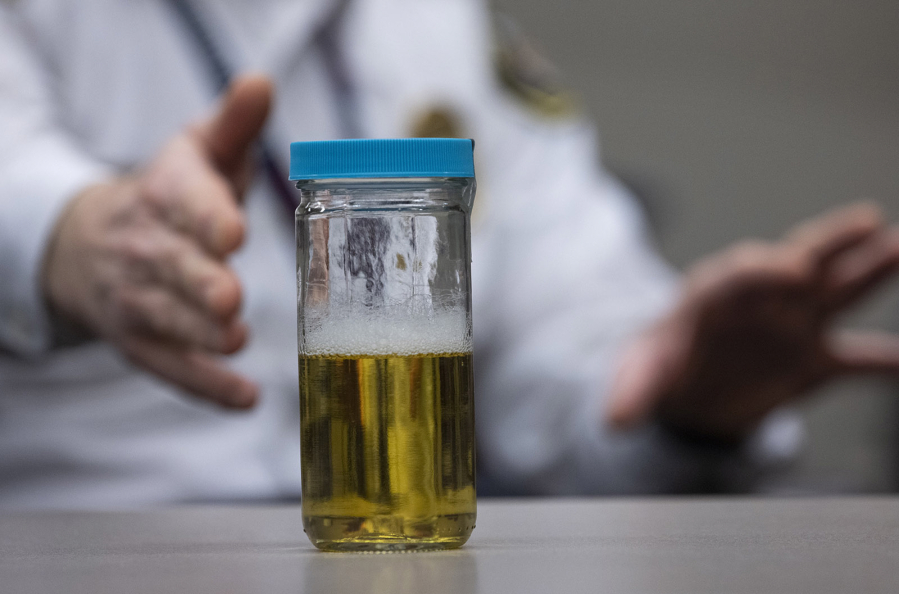With growing public awareness of the prevalence of toxic “forever chemicals” in drinking water and new testing requirements rolling out this year, Washington state communities are faced with little option but to shut down wells, find alternative water sources and seek funding for costly filtration systems.
On Wednesday, the Department of Health unveiled a public-facing dashboard sharing data from drinking water wells in the state that have been tested for the presence of these toxic chemicals. Officials hope water system operators and private well owners will use the dashboard to see if PFAS have been detected nearby and make informed decisions about testing their own water source.
In January, the DOH began requiring that some public water systems be tested for PFAS before December 2025. There are about 2,400 such systems in Washington, composed of close to 4,000 wells that need to be tested.
The city of Vancouver has found that three of its nine well fields exceed state levels for “per- and polyfluoroalkyl substances,” compounds harmful to both humans and the environment in testing in late February.
Just over a quarter of those wells have been tested. While only about 2% came back with PFAS above levels that the state considers safe for drinking, those communities have faced devastating consequences.
The highest levels of PFAS in Washington state drinking water have been found around places where firefighting foams containing the substances were used in training exercises for decades. More recently, exorbitantly high levels were detected in a San Juan Island well. Test results are published on DOH’s new PFAS data page.
The state’s new dashboard excludes private wells, and those serving less than 15 households, which are not subject to the testing requirements. Those water system operators and private well owners can use the dashboard to see if PFAS have been detected nearby.
Per- and polyfluoroalkyl substances, or PFAS, also known as “forever chemicals,” have been linked to several health disorders, including cancer, and are one of the most pervasive sources of pollution on the planet.
The chemicals were first developed in the ‘50s and ‘60s by Minnesota-based 3M, upon request from the Navy, which was looking for a more effective way to fight fires than only with water.
Since then, the chemicals have also been used in carpets, waterproof apparel and nonstick pans. Their widespread usage means that today, the chemicals are found in soil, air, water, the blood of 98% of Americans, and even the snow of Antarctica.
A massive legal battle is playing out nationwide as thousands of individuals, water systems, cities, counties and states sue manufacturers, distributors and in some cases the Department of Defense in federal court to determine who will pay the cleanup bills that will tally in the billions of dollars.
One of those systems is the Lakewood Water District in Pierce County, which spent over $5 million on filtration infrastructure and is now seeking millions more through a class-action lawsuit against 3M and other manufacturers of PFAS.
Last month, the Central Washington city of Moses Lake learned from testing that PFAS were present in some of its 16 active wells, although at concentrations below the state action levels. Nevertheless, the city shut off those wells and began redistributing clean water.
The city was the former site of the Larson Air Force base, which later was used as a landfill, where arsenic, lead, mercury, and other contaminants may have been dumped.
It is today designated a Superfund cleanup site by the U.S. Environmental Protection Agency, a title reserved for some of the most contaminated, highest priority cleanup sites in the nation.
The city is hoping to continue testing to see if the levels increase, which may require Moses Lake to buy a filtration system, as Lakewood did. Chad Strevy, Moses Lake water division manager, said the systems would cost millions, but the city is betting on using funding awarded from a future settlement of the PFAS liability lawsuit.
The DOH dashboard doesn’t include all the tests that have been carried out in the state. Since 2021, the Army has sampled water from private wells in the vicinity of its military bases across the country. In areas around the four bases in Washington, it has found hundreds of wells with PFAS concentrations above the state action levels.
One well on Whidbey Island registered over 300 times the state action level for one of the chemicals, but those results are not included in the DOH dashboard. Mike Means, a manager in the Office of Drinking Water in the state Department of Health, told The Seattle Times that DOH has considered adding data from tests performed by other agencies, like the Department of Defense.
Washington state’s action levels are stricter then the EPA advisory levels. But this year, in a step to start regulating PFAS contamination at the federal level, the EPA proposed new, lower levels for PFAS concentrations in water that, if approved, would become enforceable nationwide.



